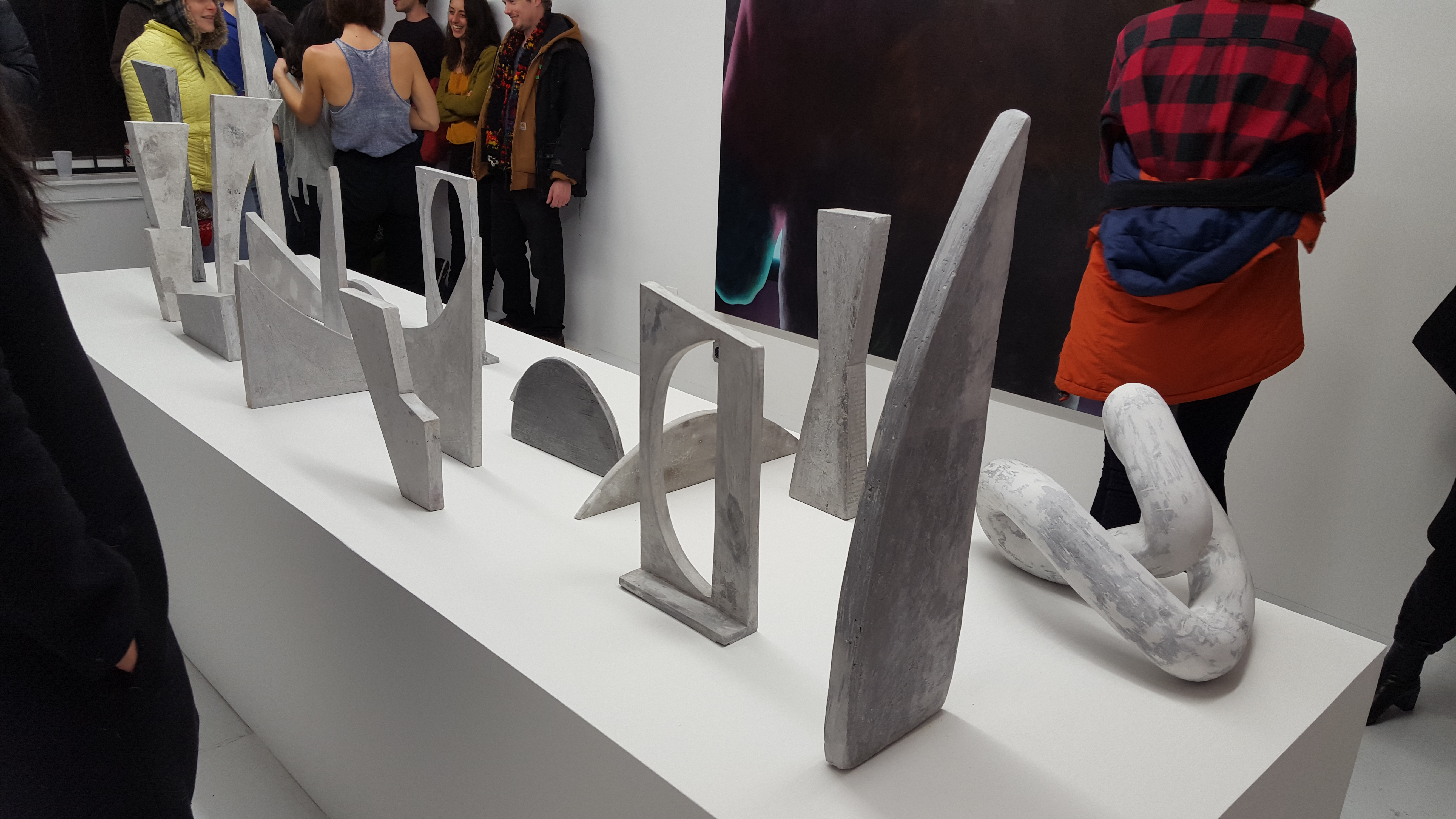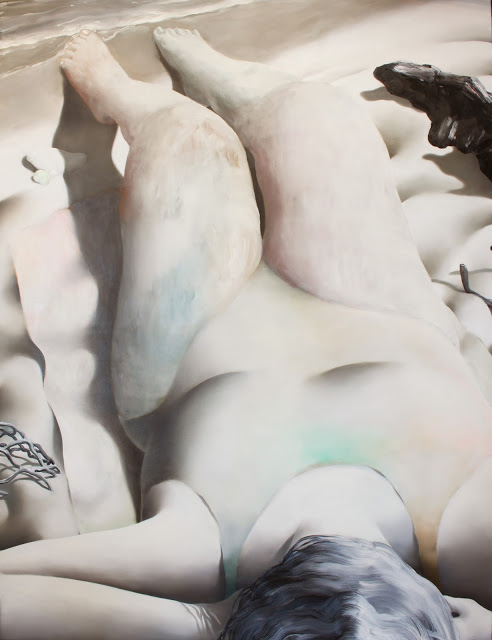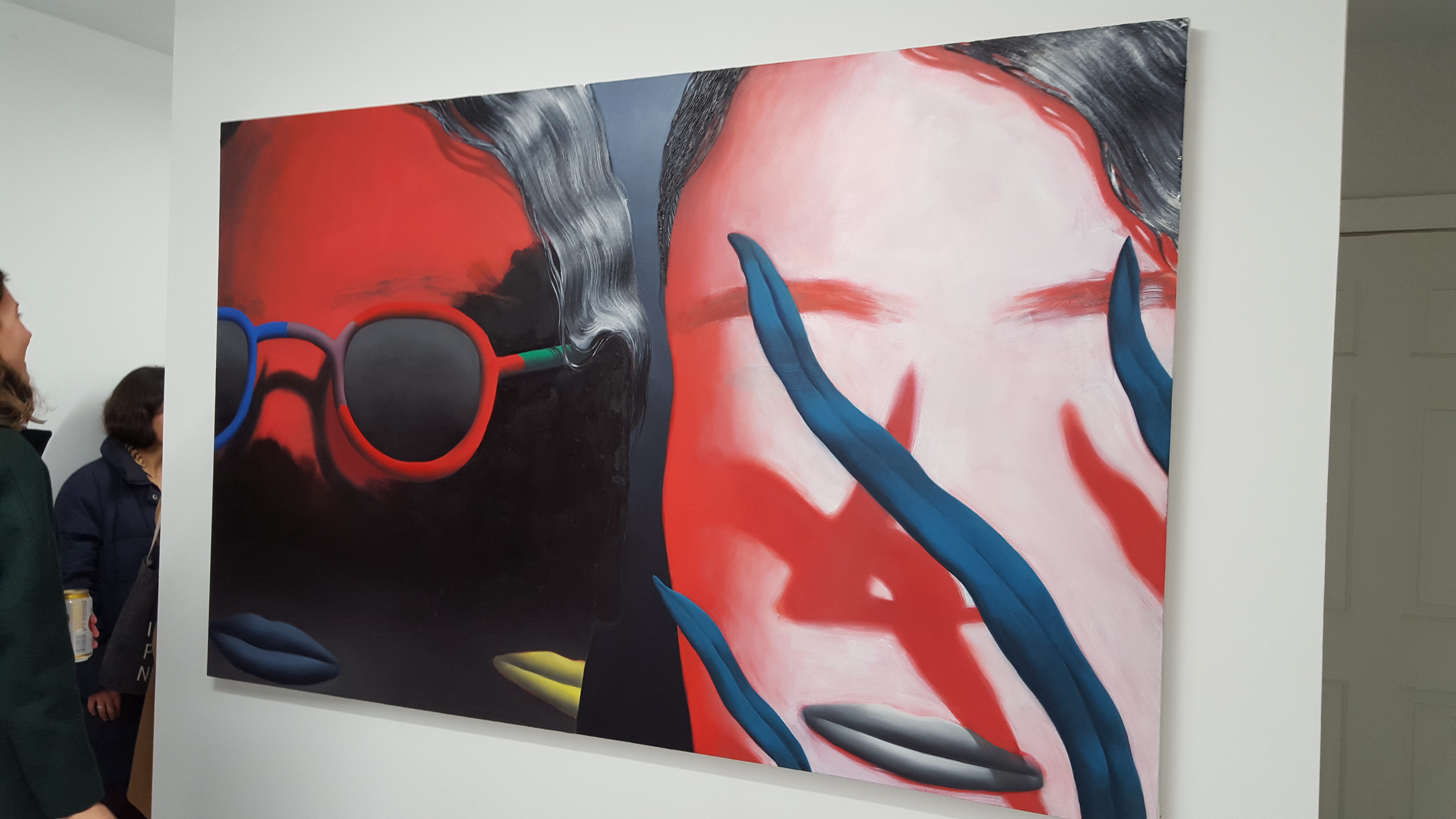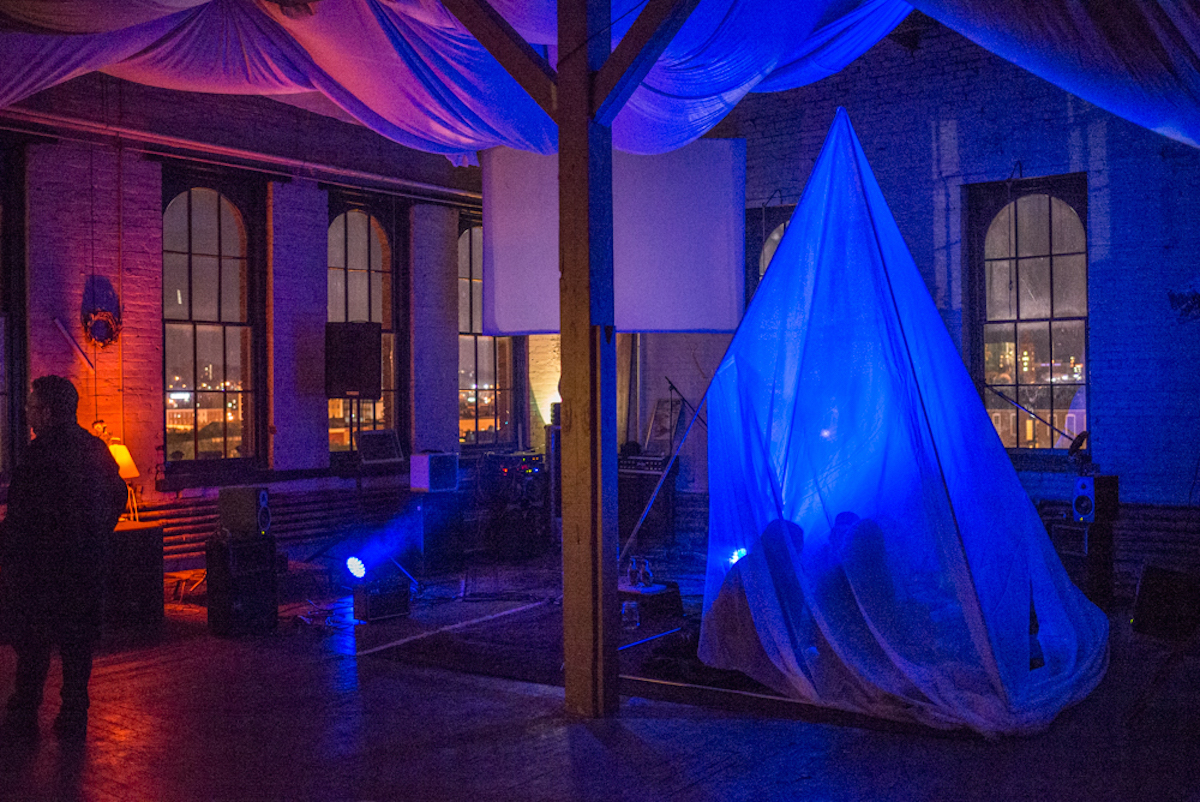Rowan Fulton on Jordan Kasey and Carolyn Salas in Headspace at new gallery Phoebe Projects
Walking down Franklin St. last Saturday, Headspace, the inaugural show of Phoebe Projects, had a certain magnetism which set it apart. Utilizing the space which once housed Freddy Gallery, Phoebe makes elegant use of its own humble size, pairing the massive paintings of Jordan Kasey with Carolyn Salas’s array of stark, small-scale abstract sculptures. Here we get a meaningful dialogue between works with diverging messages, but shared tone and visual language.
In her three figurative paintings, Kasey weaves surreal narratives through the use of non-literal color and texture. Smooth, hulking masses are given enough human indicators (sunglasses, doughnut-y cartoon lips, a sweeping brush of hair here and there) to read as figurative, yet they are too non-human (lacking eyes, naturalistic color, and a sense of fleshiness) to arouse empathy in the viewer. As a result, the viewer gets the feeling that they are stepping inside of a dream, viewing an unusual narrative while aware that it is not real.
The typical response of a viewer faced with a large painting is, of course, to step back and, by seeing it in its entirety, conquer it as an object. Headspace, however, forcefully denies us this luxury by confining the audience to a very small space. And because of the placement of Salas’s sculptures in the center of the room, it is impossible to step back even the length of the gallery in order to view a painting. So what happens when we must confront a six-foot canvas from three feet away? The viewer is made to feel claustrophobic and overwhelmed. The content of the images helps with this psychological response, giving us not broad vistas but jarring close-ups.
Most compelling in this regard is “TV Dinner”, in which ¾ of the canvas is filled by a darkened figure who, fork and wineglass in each hand, appears to be sitting uncomfortably close to a TV screen from which a ghostly set of eyes gaze back at him as well as the viewer. Face hidden from view, the figure is made to seem serene and perhaps even otherworldly by the cold-white glow of television light which outlines his silhouette. Because the figure not only fills the frame, but also extends off of its edges, our only entry point into the space is found by looking over his shoulder, where those eyes pull one’s gaze right back inward. Rather than drawing you in, this image creates a sense of space that all but pushes you out.
 Jordan Kasey “TV Dinner”
Jordan Kasey “TV Dinner”
 Carolyn Salas “Line Studies no. 1-18” with “Movement Studies no. 6” at far right
Carolyn Salas “Line Studies no. 1-18” with “Movement Studies no. 6” at far right
Meanwhile, a long pedestal dotted with Salas’s small sculptures, which are plaster-cast and fiberglass-and graphite-coated, serves as a centerpiece for the show. For a group of sculptures which are largely angular in shape and cool-gray, these have a surprisingly strong sense of personality. Some pieces have steadfast bases, others teeter to the side, while others, top-heavy, reach upward. Essentially limiting her lexicon of shapes to polygons and semicircles with a depth of roughly an inch, Salas composes distinct characters using only the simplest of features.
Salas and Kasey, who utilize different styles and media, may seem like strange bedfellows, however, considering their shared intention to blend subject and frame, as well as a thoughtful use of negative space, their combined efforts make for a strong dialogue.
In Salas’s array of sculptures, geometric holes cut in the centers of some pieces have the effect of transforming sculptures into frames through which to see other sculptures, making dynamic use of negative space by generating new compositions. This allows for a meaningful link to Kasey’s paintings, in which (albeit, more organic) gaps between forms are used sparingly to carve out slivers of light and shadow, in places like the figure’s armits in “TV Dinner” and the gaps between the figure’s legs in “Person Lying on a Sandy Beach”. And because Kasey’s figures are frontally oriented, they can also become frames for their environments, rather than simply subjects within them, and most dramatically so in “TV Dinner”.
 Jordan Kasey “Person Lying on a Sandy Beach”
Jordan Kasey “Person Lying on a Sandy Beach”
Another playful connection can be drawn between “Zero”, Salas’s wonky toroidal sculpture tucked away in the back corner of the gallery, and Kasey’s painting, “Twins”, in which two vibrant cartoonish faces stare blankly forward from behind a wispy plant. After seeing the faces’ noodle-y mouths in the painting, I can’t help but read Salas’s sculpture as one of the mouths stretched wide into an “O” shape. Although it may be coincidental, I enjoyed this formal connection, because it lent a playfulness to “Zero” as well as an austerity to “Twins” that otherwise would not have been apparent in either work.
Headspace doesn’t really show us a substantial amount of work from either artist, and yet it offers a clean, coherent vision within the confines of a space that could be described as something between a window display and what one would consider a conventional art gallery. Overall, Headspace is a promising start to the gallery, and I’m intrigued to see the curatorial solutions that will arise in future shows.
 Jordan Kasey “Twins”
Jordan Kasey “Twins”
HEADSPACE: Jordan Kasey and Carolyn Salas will be up at Phoebe Projects through February 27, 2016.
Author Rowan Fulton is a Baltimore-based artist and writer.






